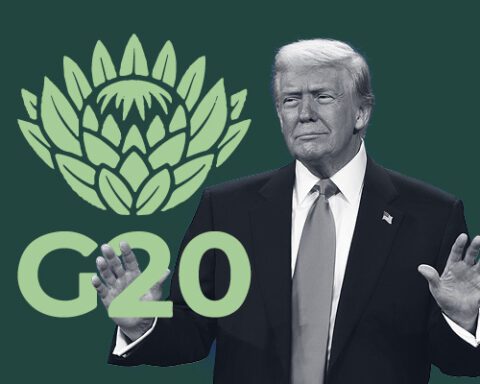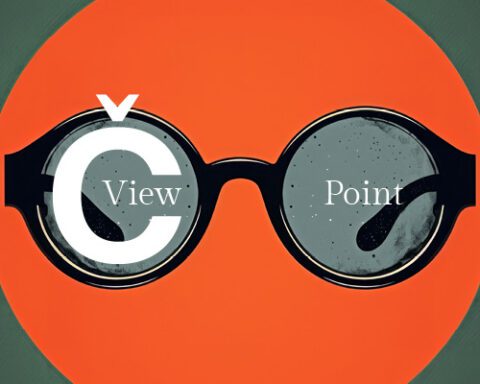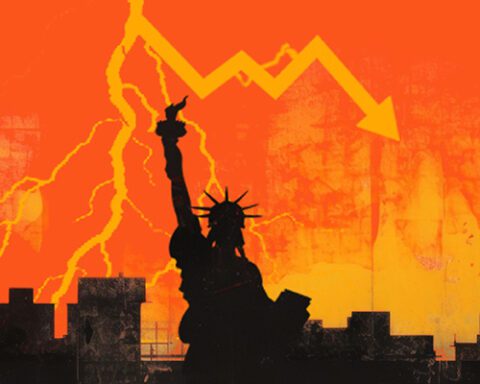Besides the two world wars in the first half of the 20th century, I cannot recall a public political phenomenon that has divided international opinion as much as the 45th and 47th presidents of the US, Donald J Trump. Instinctively, I’d want to think that Trump’s second term will go down in the annals as the most destructive and thoughtless intervention in the history of modern politics.
Western Europe has lost a historic ally that has taken the lead in protecting liberal democratic systems for more than 80 years. Now trade relations and international agreements are being weaponised to safeguard the largest economy in the world from competition. Diplomatic talks in the White House turn into street fights. Washington’s new friends are the autocrats, dictators and warmongers of the past. International rules of the game didn’t just change overnight, the world’s master of patronage in Washington has become a god with villains for friends.
For example, if in the coming days, Trump lifts sanctions against Russia after he went on the offensive against Ukraine by withdrawing all intelligence from Volodymyr Zelensky, America will have aligned itself militarily with the Russians against Western Europe, and the world will suddenly be a very different place.
The scramble among world leaders, diplomats, academics and analysts to make sense of what is happening in the US is tragic because the consequences are so drastic. The public consensus from a liberal and European perspective is that Trump has a personality disorder that makes him self-obsessed, arrogant and selfishly serving his own and his closest confidants’ interests with a transparent urge to destroy. The last deranged person to use his immense international power with such fervour was Adolf Hitler.
This puts a damper on the crude generalisation that 54% of Americans voted for Donald J Trump in 2024, and that despite his overthrow of both domestic politics and the world order, his support – according to almost daily opinion polls – is not significantly affected by the volatility. It’s as if millions of Americans have been waiting decades for a messiah to come and show the rest of the world the middle finger. There is a real chance that the average American agrees with a president who looks and sounds like an illiterate, bombastic narcissist to Europeans.
How does Trump see a superpower?
Often things are not as simple as they seem, and Trump and his administration are probably not that simple either. I’ve listened to two podcasts that infinitely complicated my seemingly simplistic understanding of the Trump administration as destructive and devoid of logic. One was podcaster Ezra Klein interviewing Fareed Zakaria, the former editor of Newsweek International, editor at TIME Magazine and columnist for The Washington Post, and then there was Sam Harris’s conversation with British historian Niall Ferguson.
Let’s start with Ferguson. For him, the question is how we should understand the US’s current interpretation of power, especially its own power. According to him, the country’s position as a superpower was never based on its international relations with allies, especially the Europeans. The preoccupation of analysts and EU bureaucrats with the supposed destruction – by the Trump administration – of a more than 80-year-old relationship is nothing more than a kind of self-satisfying mythology. The US’s understanding of itself as a superpower is based on other factors, not relations with allies, Ferguson claims.
But before we get to his analysis of power and America, just another point he makes in support of his “contradiction of conventional wisdom” argument. Don’t stop reading now because the argument gets a bit technical, I’ll gossip to my heart’s content again later.
Dollars, debt and defence
Ferguson points out that America’s debt burden has become a complicating variable. There is a reasonable consensus among economists and policymakers in the White House that the US’s excessive national debt burden poses a strategic challenge to its national security. Its federal debt burden (2024) expressed as a percentage of the gross national product (GNP) is 98%. He calculates that in 2024 – for the first time since 1934 – the US paid more in interest on the federal debt burden than was spent on the military budget.
Why does it seem strange, or like an indication of something important? Ferguson refers to the theory by Scottish philosopher and historian Adam Ferguson (no relation) that since the 16th century, no international superpower has survived a situation of interest on debt larger than the defence budget. Such a situation, for Adam Ferguson, is a sign that such a country’s international power monopoly is coming to an end.
In the fiscal year of our Lord 2024, the US paid $1.126-trillion in interest on the national debt, an increase of $251 billion over the previous fiscal year. In the same period, the budget of the US department of defence was $849.8bn. If calculated as a percentage of GNP over the past decade, there is an alarming decline in defence spending. In the late 2000s, it was almost 5% of GNP, in 2024 about 3.5%. Trump intends to cut it even further.
In an article in The Wall Street Journal, Niall Ferguson continues with the argument, pointing out that this statistic was indeed applicable to 16th-century Habsburg Spain, the 17th-century Republiek der Zeven Verenigde Nederlanden, France under Louis XIV (1643-1715), the 19th-century Turkish-Ottoman Empire, the Austro-Hungarian Empire (1867-1918) and also Britain in the 20th century.
I am absolutely certain that Trump and his secretary of the treasury, Scott Bessent, are totally unaware of this academic observation, but it is not a random statistic. If Adam Ferguson’s theory holds true in 2025, the Trump phenomenon is part of the last convulsions of American hegemony.
The bigger picture
Variables that should influence Adam Ferguson’s theory – and which Niall Ferguson does not refer to in his article in The Wall Street Journal – is that the US dollar is the world’s primary trading unit. It is therefore possible for the US – as a debt-relief strategy – to simply print money, not in a reckless manner, but with variables such as inflation and interest rates taken into account. About 80% of all international financial transactions take place in US dollars, giving Washington’s influence and power an extraordinary reach. The size of the GNP is therefore not all-determining.
And the US financial markets are the deepest and most liquid in the world. The New York Stock Exchange and Nasdaq have a combined market capitalisation of more than $45-trillion (2024), compared to China’s Shanghai and Shenzhen exchanges, which are worth about $12-trillion. Ferguson should perhaps have made more of these aspects in his conversation with Harris.
Ferguson further argues that the US’s economic and political dominance is also being challenged by a more than worthy opponent. China’s explosive export economy, which is now systematically converting into a consumer economy, is catching up with the US very quickly. As recently as 2001, the value added by US manufacturing was literally double that of China. Now, the roles are exactly reversed: China’s figure is twice that of the US. China’s economy, on a purchasing power parity basis (comparing the real purchasing power of currencies, a better measure of international wealth and cost of living than nominal exchange rates), has been larger than the US’s for at least the past eight years.
Trump: We are being exploited
By the way, the conversation between Klein and Zakaria focused on the foreign policy of the second Trump administration. Klein begins by asking Zakaria to define the “Trump doctrine”, which of course turns out to be almost impossible given Trump’s unpredictability. Nevertheless, Zakaria identifies a recurring theme: Trump fundamentally rejects the open international system that has existed since the Second World War and which was designed to promote stability, free trade and international co-operation.
Trump considers this system to be to the disadvantage of the US and believes that it forces America to finance global security and economic prosperity, while other countries benefit. So the core of the Trump doctrine is to renegotiate international agreements and relationships, put American interests ahead of all others, and protect or even favour US value and supply chains. America First!
However, the US’s sense of power and the Trump doctrine are more complicated. For at least the past four decades, the US has defined its position of power in terms of technological superiority. The heart of its technology industry is Silicon Valley in California. It is the world’s leading centre for technological innovation and home to the world’s largest technology companies. Apple, Google (Alphabet), Meta (Facebook), Tesla, Intel and Nvidia all have their headquarters in Silicon Valley.
The US continues to be at the forefront of superconductor electronics research, particularly through government-funded programmes such as the Intelligence Advanced Research Projects Activity’s cryogenic computing complexity programme, launched in 2014. These initiatives have only further entrenched the US’s leadership in superconductor electronics – especially since 2016.
Trump’s economic advisers tell him about the increasing sophistication of China’s value and supply chains and the exponential technological progress China has made in just the past five years. The US’s monopolistic control of superconductors may have a dampening effect on technological innovation in China but is not significantly inhibiting progress, and Germany and Japan are catching up very quickly. For now, however, this lead for America is part of its definition of itself as a superpower.
A surprising softening of relations
One of the most surprising aspects of Trump’s second term is his changing attitude toward China. During his first presidency, Trump started a trade war with China and accused President Xi Jinping of deliberately trying to undermine the US economy. But Trump hasn’t necessarily followed through on his extreme tariff threats against China. It currently seems that he is instead trying to strike economic deals, through a kind of détente. In terms of these agreements, China must undertake to buy more American goods and services that will address the trade imbalance between the countries.
In 2024, the US had a trade deficit in goods and services with China of about $295bn – the US imported $295bn more in goods from China than it exported to China. Though this figure is significant, it remains lower than the record trade deficit of $418bn in 2018. Also, compare this with the US’s negative trade balance of $235.6bn with the EU. The US total trade deficit was $918bn, the second largest in history.
This policy shift towards China contradicts Trump’s initial rhetoric and indicates that he does not want an out-and-out hostile relationship with China. Zakaria speculates that Trump is attracted to the idea of a personal relationship with Xi, as in his first term when he invited him to Mar-a-Lago. Trump’s apparent support for TikTok – despite his earlier attempt to ban it – illustrates how his policy often changes based on personal and politics-of-the-day considerations.
Ukraine ‘is irrelevant’
Klein and Zakaria also discuss Trump’s attitude towards Ukraine, which has changed drastically or even worsened, especially in the past month. Zakaria makes the argument that Trump simply views Ukraine as irrelevant to American interests. He is clearly sympathetic to Russia’s territorial claims on Ukraine and is likely to attempt to direct US policy towards an agreement that will force Ukraine to give up territory and accept neutrality. This attitude of the US president corresponds to his need to expand US territorial interests to Canada, Greenland and even Gaza.
Trump has an almost natural resonance with authoritarian figures such as Russia’s Vladimir Putin, Xi, India’s Narendra Modi and Turkey’s Recep Tayyip Erdoğan, while he views European democracies with obvious disdain. This preference is based not only on power but also on what Trump assumes would be the US’s common values. Putin, like Trump, positions himself unequivocally against Western liberalism and condemns with unrestrained resentment the recognition of diversity, gender rights and the open society that is typical of a liberal democracy.
Finally
The US’s dominance, even by its own standards, can therefore no longer be taken for granted. If, for example, China decides to isolate Taiwan economically and logistically from the international economy, there is probably little more the US can do than negotiate with Xi. China is not only economically powerful but also has what Ferguson refers to as “significant military capacity”. The US simply cannot afford a military conflict with China. And certainly not one taking place simultaneously in the Middle East, Eastern Europe and the Far East.
Trump and most reasonable and intelligent Americans are fully aware of the waning international power of the Star-Spangled Banner. In this alarming algorithm, Zelensky and Ukraine form a political liability, rather than an ally to be protected at all costs. Trump’s need to make “deals” with the Russians and China therefore has to do with the fact that the US simply no longer has the capacity to challenge these countries with power politics.
Trump’s political allies in Washington also show a discernible hostility to European leaders and are sympathetic to authoritarian figures such as Putin, Viktor Orbán of Hungary and even Xi. Trump’s ambivalence sends a clear message to Western Europe that they can no longer rely on American protection. European leaders, including Germany’s Chancellor Friedrich Merz, are now openly discussing strategic independence from the US – something that was unthinkable less than a decade ago.
Sign up to Currency’s weekly newsletters to receive your own bulletin of weekday news and weekend treats. Register here.










